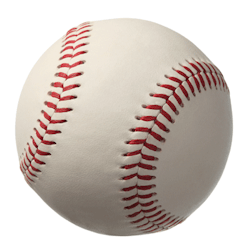The Message in a Bottle Mailbag is a monthly feature of the e-newsletter, Pearls for Your Practice: The Product Navigator. Each month, Editorial Director Joshua Austin, DDS, FAGD, answers reader-submitted questions to help you navigate your dental product decisions (and more!). This month, he responds to a question about whether curing light exposure can cause vision problems, shares what he uses for bonding zirconia crowns, and discusses baseball.
I saw your article about the Orbiter for curing lights. It seems like a good idea, but do you think that curing lights are actually going to cause us to have vision issues in the future?
Answer
Good question. Like everyone else, I was made afraid of vision damage from curing lights back in dental school when the faculty told us not to look at them. No one ever showed us any evidence to support their claims, but we went along with it.
A little research shows that the blue light emitted by curing lights tends to be absorbed by the retina. (1) Excessive exposure causes oxidative damage to the retina, which can lead to macular degeneration. (1) No one has ever quantified how much exposure causes damage (that's not something I want to try to figure out!).
I think the key is to limit exposure as much as possible. I don’t think we need to stop, drop, and roll whenever we see a little bit of that blue light, but we should probably do our due diligence to try not to stare deep into the curing light. Shields (such as the Orbiter), paddles, or specialized glasses can all help. My mom always told me something would make me go blind. I just didn’t think it would be a curing light.
______________________________________________________________________________________________________
Question
What are you using to bond BruxZir crowns?
Answer
Zirconia is tricky. It's tough to bond. That doesn’t mean we can’t do it, but it takes some care. Lately, I have been using Panavia V5 by Kuraray Dental with tremendous success. This is my process: After try-in, right before cementing, prep the inside of the crown for bonding. For me, that involves air abrasion to the intaglio surface of the crown. Once that is done, a quick coat of Ivoclean by Ivoclar Vivadent will completely decontaminate the inside of the crown. Rinse that away and dry it out. Never—I repeat never—use phosphoric acid etch on the inside of a zirconia crown. Nothing will stick to it after exposure to phosphoric acid etch.
After you've prepped the inside of the zirconia crown, apply the ceramic primer that comes with the Panavia V5 to the inside of the crown. Scrub that in and let it set while you continue to work. Now isolate the tooth. Apply a thin layer of the tooth primer to the prep and scrub it in. Air dry that, and air dry the inside of the crown. Load the crown with the Panavia V5 and insert it. I hold the crown in place and count to 15 Mississippi to really let the self-etching chemistry work. I then tack cure around the margin for a couple of seconds and remove the excess cement.
Panavia V5 has been a great choice for this. It is relatively simple to use, and we have had great results with it. I have yet to have a crown come off, and sensitivity has been minimal. Good luck!
______________________________________________________________________________________________________
Are you happy that baseball season is back? Did you go to spring training? We went to see the Dodgers and had a great time.
Answer
I love having my friend baseball back for my nightly enjoyment. It's so soothing to have a game on every night. It's part of my blood. I know baseball isn't for everyone, but I really love it.
Usually we make it out to Arizona for spring training. With my travel and lecture schedule, we weren’t able to make it this year, which is sad. It's one of my favorite trips of the year, and I hope to get back at it next year. If you are a baseball fan, do yourself a favor and hit up the Cactus League next spring in the Phoenix area. You will love it!
Editor's note: Do you have a question for Dr. Austin? Is there a product you'd like to see him review? Or would you like to submit your own Pearl? Send an e-mail to [email protected]. You might just see it in the e-newsletter, Pearls for Your Practice: The Product Navigator! If you're not a Product Navigator subscriber, click here to sign up.
Reference
1. Salsberg K. Blue light hazard in dentistry. OralHealth website. http://www.oralhealthgroup.com/features/blue-light-hazard-in-dentistry.
More reading
April 2017 | Expanded-field loupes, oral cancer screening recommendations, NCAA
March 2017 | High caries risk and gluten-free diets
February 2017 | Strippable fibers for soft-tissue lasers, glass ionomers, hiring a speaking coach









